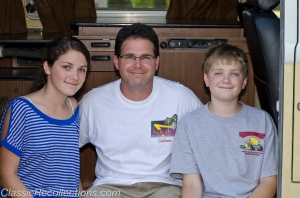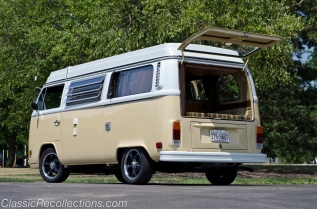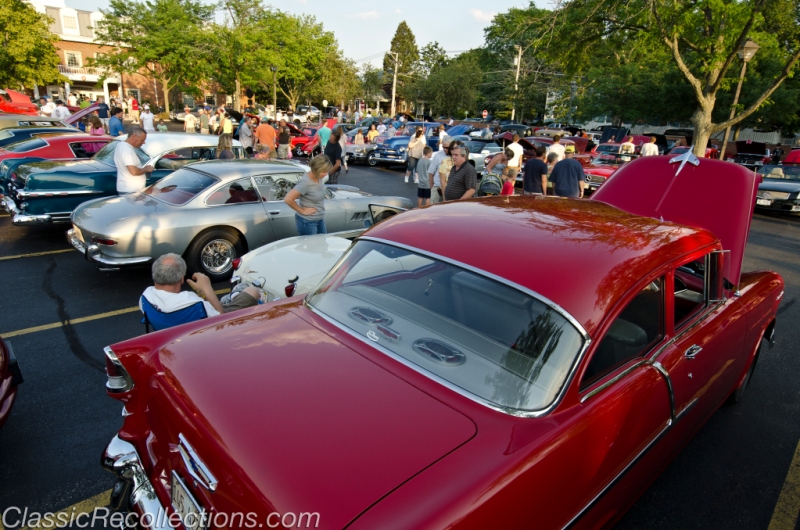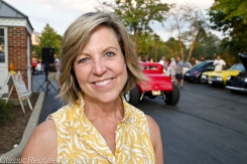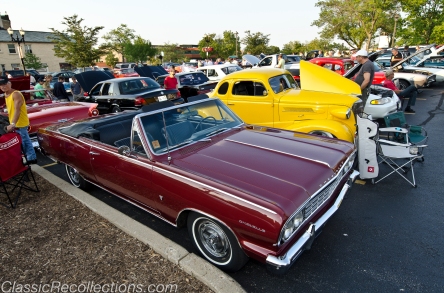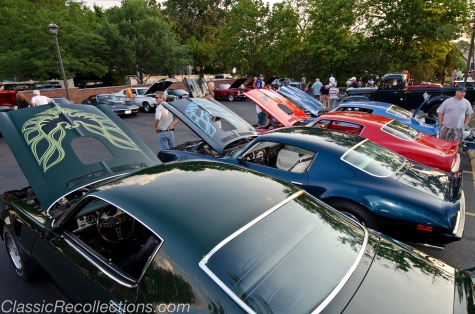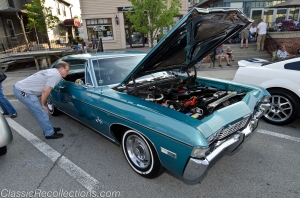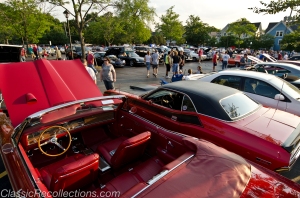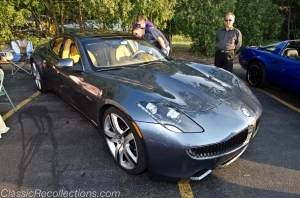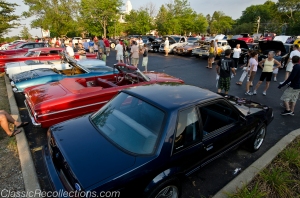(Editor’s note: Shortly after this article was written and printed in Auto Enthusiast (July issue), John Guarnieri was killed in a traffic accident en route to a show with his Dodge in tow. Our sympathies are extended to the friends and family in the loss and it was our privilege to share John’s car and passion with our readers).
Financial bailouts of automobile companies have been in the news but shoring up the auto industry is not something limited to recent times.
This beautiful 1955 Dodge Custom Royal Lancer is proof that sometimes the infusion of extra cash can produce striking results. Almost driven to bankruptcy because of poor sales in 1953 and 1954, Chrysler was saved from collapse by a $250 million loan from Prudential and the talents of automotive designer Virgil Exner. In 1955, a beautiful collection of cars across the board became the result that put Chrysler solidly back into the Big Three.
The redesigned 1955 Dodge emerged from the makeover as a truly representative car of the ’50s. Positioned between Plymouth andDe Soto in the Chrysler lineup, the Dodge sported a six-volt electrical system, kingpin/leaf spring suspension, and 15-inch wheels. Six adults could ride in comfort and the trunk could hold their luggage.
Over-engineered with 20-quart cooling systems and six-quart oil capacities (sixes as well as V-8s) the engines ran on low octane gas and were trouble free. They were good looking cars then and still are today.
Enter John Guarnieri, a retired police officer and lifelong Mopar enthusiast living in St. Augustine, Florida. John is an active member of the Ancient City Auto Club and has owned 64 vehicles over the years. His involvement with this beautiful example began moments before it was headed to the crusher!
In February 2004, he and a friend were on a parts run when they drove past a junkyard in Lake City, South Carolina, surprised to see a distinctive tri-colored Dodge being pushed inside the fence. Except for rusted floorboards from a failed heater core, the car was complete and the body was pristine. A six-volt battery and a gallon of fresh gas brought the 270 Hemi V-8 to life, convincing John that the car had potential.
He learned that the car had been carefully stored for more than 25 years by the grandfather and his son, but the grandson got involved with drugs and never paid the storage fees. Knowing that the Custom Royal Lancer was the flagship car of the Dodge line, John stepped up like Prudential a half century before, intent on saving the car. He wrote a check for the storage fee, paid for a South Carolina title, and took the car home. As an unexpected bonus, the dealer threw in a second ’55 Dodge as a parts car. In all, John acquired five parts cars during the almost four year restoration.
After trailering the car back to St. Augustine, John’s first step was to get the brakes working properly and exercising the engine. Several trips up and down the highway and two oil changes later, the engine stopped spewing black smoke, a sign that it was time for the full restoration to begin.
Recalling the process with a smile, John says, “It only took two days to tear the car apart and 3½ years to put it back together!” The five parts cars and new old stock items located on eBay gave John everything he needed to complete the project. He accomplished much of the work himself, overhauling the engine on his own and rebuilding the transmission with help from Danny Novello at American Transmission in St. Augustine.
John also redid the brake system, refurbished the gas tank, added a new YnZ wiring harness, and located five Goodyear 7.10 x 15 tires with 2¾ inch whitewalls. The correct combination of Jacquard fabric and Cordagrain vinyl was sourced in Canada and installed by Old City Upholstery in St. Augustine. Several other local experts added their talents, like Tony Puleo at A&R Auto Electrics, along with staff members Jimmy and Charlie, who handled the rebuild of the car’s electrical components.
Boyd’s Glass located and installed new tinted glass and Rick’s Mufflers fabricated the new exhaust system. Tony Castellano polished the stainless steel and Space Coast Plating of Melbourne, Florida, did the chrome. John’s good friend, Hamlet Smith from Palm Coast, Florida, helped in reassembling the car and John’s wife Lynda hand-painted the hubcap spinners, gauges and related pieces.
The refurbished 270 Super Red Ram V-8 came equipped with Hemi heads and a two-barrel carb, producing 183hp. A rare Power Pack option was available from the factory that added a four-barrel Carter carb and dual exhausts, good for an additional 10hp. John’s car is equipped with a two-speed PowerFlite transmission, complete with a unique dash-mounted shift lever. (Those famous Chrysler pushbuttons appeared the following year.) Chrome trim separated the colors on the door panels. Gauges span the width of the dash and on John’s car. The eight-tube pushbutton radio has an optional rear speaker.
Unique colors were part of the mid-’50s experience and Dodge certainly brightened the landscape, taking 13 basic colors and expanding the choices with 16 two-tone combinations. Newly introduced in 1955 were 16 more three-tone combinations. If 45 choices still weren’t enough for you, upper colors, insert colors, and lower colors could be switched, providing a staggering 76-choice color palette. John’s colors of Regal Burgundy Metallic, white, and black were colors that often appeared in Dodge brochures, making them a sought after combination. Handling the spray gun, Billy Walters from Jacksonville, Florida, shot the chassis and accomplished the unique tri-color paint job.
Saved from bankruptcy by Prudential and the crusher by Guarnieri, the Dodge justified their faith beginning in December 2008 when the car was presented to the judges. The hard work and long hours were rewarded with a Junior Award at AACA’s ’08 Winter Meet in Lakeland, Florida. The Senior Award followed at the 2009 AACA Spring Meet in Charlotte, North Carolina.
The following year, John trailered the car to New Bern, North Carolina where it won again, taking home an AACA Grand National Award. John hopes the car will obtain its Senior Grand National Award at the 2012 Grand National Meet in Shelbyville, Tennessee.
When that happens, it will be a genuinely happy ending for an almost bankrupt car once headed to the crusher.







